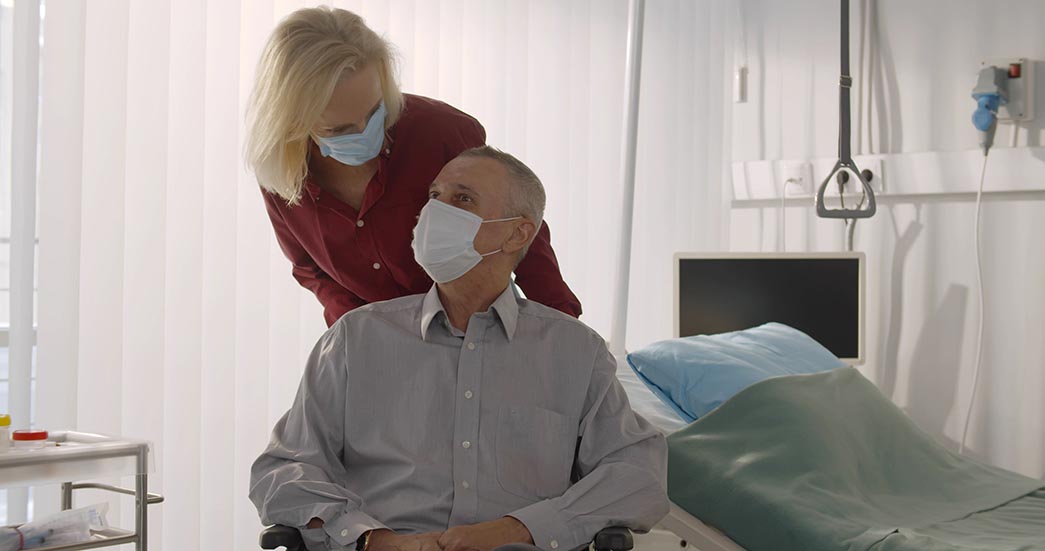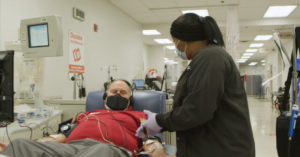Share:
Asante moves toward a more efficient discharge process

It is no secret that for many months, Asante has tirelessly navigated complex capacity constraints across the system to provide the best possible care for our patients and communities. In alignment with the consulting firm Edgility, clinical best practices and our executive team’s commitment, Asante is moving forward with the implementation of the expected discharge date (EDD) entry in Epic on May 11.
The expected discharge date is entered into Epic to inform teams on when a patient is expected to be discharged. The EDD is selected initially by the provider based on their clinical judgment and the patient’s diagnosis and comorbidities, if applicable. The EDD is then updated as appropriate based on changes to clinical condition, clinical course, social determinants or other factors that may affect discharge. The EDD is a best-practice standard and a foundational element for a long-term effective capacity management system.
Everyone benefits from a multidisciplinary approach with an expected discharge date in the patient chart. EDD is the first step toward improving discharge efficiencies by creating expectations and preparing the patient to leave the hospital safely. The EDD promotes patient and team collaboration toward achieving the common goal of patient health, safety and satisfaction. It allows for greater predictability of patient movement throughout the health system. This one step will not solve our problems. It will, however, have positive impacts for our staff and patients.
The project team includes representatives from each Asante hospital: interdisciplinary direct care staff members, interdisciplinary leadership, providers (including VPMAs), as well as Epic support. This team has worked diligently over the past couple months to set us up for success.
The rollout of EDD is fast-paced — something necessary in our current state. Beyond being a best practice, the EDD is important for a multitude of reasons. As highlighted by our project team members, having an EDD is a proactive approach. What resonated with us may resonate with you. Some of our team shared why this implementation is important to them:
- Ensures collaboration between multiple disciplines toward a mutual goal.
- Gets everyone on the same page to plan for discharge.
- Helps set expectations for my patient and their family. Helps them to set expectations for their own care.
- Provides clear and consistent communication.
- Easily locates the discharge date and reasons for delay within the chart so I can communicate that with my patient.
- Helps my patient be prepared and set them up for success.
- Improves patient experience:
- Encourages patients to be active participants in their own health, healing and journey.
- Improves confidence to continue the healing process and lifestyle changes after discharge.
- Helps patients achieve their goals. Helps to encourage and motivate patients. Reduces surprises – helps my patient plan for what they need.
- Prevents unnecessary delays. If there are delays, I know what they are and am able to communicate them.
- Promotes efficiency for discharge. As a staff member, I want to be prepared and have my patient ready the day of discharge. Knowing and planning helps to spread out the work to prepare the patient, and environment if needed, and I don’t have to scramble the morning of discharge. The work can be better shared among the whole multidisciplinary care team.
Discharge efficiency and planning requires collaboration from the entire care team. While providers will own the entry and updating of the expected discharge date for all adult (18 or older) inpatients, the multidisciplinary care team will have influence to input discharge delays and communicate with the patient and family about what to expect. It is everyone’s responsibility to work toward the expected discharge date.
At initial rollout, the EDD will default to the next day for observation patients and will be a field in all other admission orders.
Please pay attention to the training provided for the update, which will detail the EDD entry and process. As with all Epic updates, our Epic teams, leaders and colleagues are here to help support and answer any questions you have.
The next step in our journey toward discharge efficiency involves implementing discharge milestones within Epic. Milestones will build upon the success of the EDD entry and will change the requirements of EDD entry on admission.
Resources available to you:
- Education for the Epic EDD workflows is included in the Epic upgrade slides.
- An Epic tip sheet for EDD will be shared as soon as it is finalized.
Our team is highly engaged. If you would like additional education or information, we are happy to attend department meetings and huddles, or can meet with you one-on-one if needed.
If you’d like to share feedback or need more support, please email me.
If you have a question, please contact the author or relevant department directly.




1 Comment. Leave new
Thank You for taking the time to share this information!